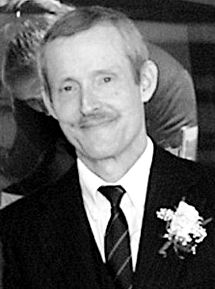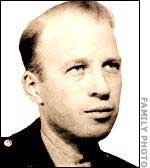Do I obsess about 9/11? At least I try not to. In short: The official story of the “terrorist attacks” appears to me a fraud; the fraud has apparently succeeded in accomplishing its objectives; and so goes yet another small chapter in the endless history of the material world.
But though I have better things to think about than 9/11, I do sometimes think about it, especially on the anniversary of the event, or when I’m subjected to extra searches by airport security, or when something about 9/11 I didn’t know before comes to my attention as particularly striking.
Today, two such special items.
The first concerns the anthrax attacks that swiftly followed, and intensified, the terror of 9/11.
By way of review:
The FBI found out that the anthrax — military grade — could only have come from one place: the U.S. Army’s biomedical lab — officially, the Medical Research Institute of Infectious Diseases (AMRIID) — at Fort Detrick, Maryland. In the words of the Institute’s website, “It is the only laboratory within DoD [the Department of Defense] with the capability to study highly hazardous viruses” — such as anthrax — “requiring maximum containment.” For military-grade anthrax, it’s the only place.
 After several years and some strange false steps, the FBI was finally sure of the culprit: Dr. Bruce Ivins, a senior biodefense researcher at the Institute. But in July of 2008, just when they were ready to swoop down on him — wouldn’t you know it, all of a sudden he “apparently committed suicide.”
After several years and some strange false steps, the FBI was finally sure of the culprit: Dr. Bruce Ivins, a senior biodefense researcher at the Institute. But in July of 2008, just when they were ready to swoop down on him — wouldn’t you know it, all of a sudden he “apparently committed suicide.”
Three years ago on this website, I gave a few of the several reasons for regarding the FBI’s account as a fish story.
Since then, more reasons have piled up. (Sample item from the pile: In April 2010, a microbiologist who had been a colleague of Ivins at the Institute told a panel at the National Academy of Sciences he considered it impossible Ivins could have cooked up that anthrax. To do so, he said, would have taken a year of intensive work at the Army’s lab, and there’s no way Ivins could have pulled it off under the noses of everyone else who worked there. At the Army lab, he added, “among the senior scientists, no one believes it.”)
 But, to get to my first “special item”: The matter gets darker. For this is not the first case of a top military scientist working with anthrax at Fort Detrick who “apparently committed suicide.” It’s at least the second, because we have to take into account the case of Dr. Frank Olson, an “Army scientist” who “apparently committed suicide” in November of 1953 by jumping through a window on the tenth floor of the Hotel Statler (now the Hotel Pennsylvania) in New York City.
But, to get to my first “special item”: The matter gets darker. For this is not the first case of a top military scientist working with anthrax at Fort Detrick who “apparently committed suicide.” It’s at least the second, because we have to take into account the case of Dr. Frank Olson, an “Army scientist” who “apparently committed suicide” in November of 1953 by jumping through a window on the tenth floor of the Hotel Statler (now the Hotel Pennsylvania) in New York City.
As it turned out, Frank Olson was much more than an “Army scientist.” As his family puts it, “He was a ‘CIA officer’ associated with projects so heavily guarded that the term ‘top secret’ gives only scant indication of their sensitivity.”
I ought to mention, also, that when Dr. Olson checked into that New York hotel room he was escorted by another C.I.A. officer, who was still in the room when Dr. Olson, in the middle of the night, “fell or jumped” to his death.
The title of a 2001 article in The New York Times Magazine asked “What Did the C.I.A. Do to Eric Olson’s Father?” and gave a pretty good idea. A detailed and well-reasoned article posted on the Olson family’s website bears a title more direct: Family Statement on the Murder of Frank Olson.
For Dr. Olson and for Dr. Ivins, a moment of silence.
My second item:
 A moment of silence, also, for Barry Jennings, who on 9/11 was the deputy director of the emergency services department for the New York City Housing Authority. Trapped for several hours on that day in World Trade Center Building 7 before it collapsed, he later naively told of his experiences: hearing explosions from below him in the building (officially, no explosions occurred), stepping over dead bodies on the way out (officially, there were no casualties), emerging through a lobby that “looked like King Kong had stepped on it” (nothing described in the official account should have wrought destruction in the lobby before the building fell). Mr. Jennings told of all this in a video interview in 2007 with independent filmmaker Dylan Avery.
A moment of silence, also, for Barry Jennings, who on 9/11 was the deputy director of the emergency services department for the New York City Housing Authority. Trapped for several hours on that day in World Trade Center Building 7 before it collapsed, he later naively told of his experiences: hearing explosions from below him in the building (officially, no explosions occurred), stepping over dead bodies on the way out (officially, there were no casualties), emerging through a lobby that “looked like King Kong had stepped on it” (nothing described in the official account should have wrought destruction in the lobby before the building fell). Mr. Jennings told of all this in a video interview in 2007 with independent filmmaker Dylan Avery.
On August 21, 2008, the National Institute of Standards and Technology (NIST) issued its draft report explaining why the building fell — as a result of a normal fire — and invited public comment. Barry Jennings, however, had nothing to say. Two days earlier he had died in hospital.
The official reports gave no cause for his death. When Mr. Avery drove to Mr. Jennings’s home, he found it locked up and abandoned. He hired a private investigator to find out more, but after two days, Mr. Avery recalls, the investigator wrote back, “Due to some of the information I have uncovered, I have determined that this is a job for the police. I have refunded your credit card. Please do not contact me ever again about this individual.”
Videos and further details are posted at barryjenningsmystery.blogspot.com/.
What does any of this have to do with Krishna consciousness or spiritual understanding? For the Krishna connection, please read an article I posted here five years ago, A Distant View of 9/11. When we view from a distance, we sometimes see a larger picture. As 9/11 and the anthrax attacks recede further into the distance of history, you might find A Distant View worth reviewing.

You must be logged in to post a comment.